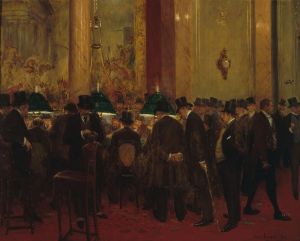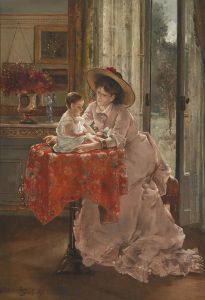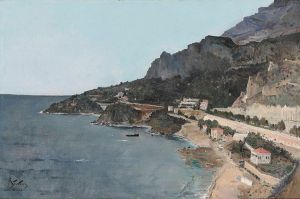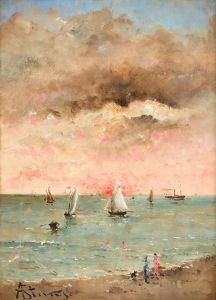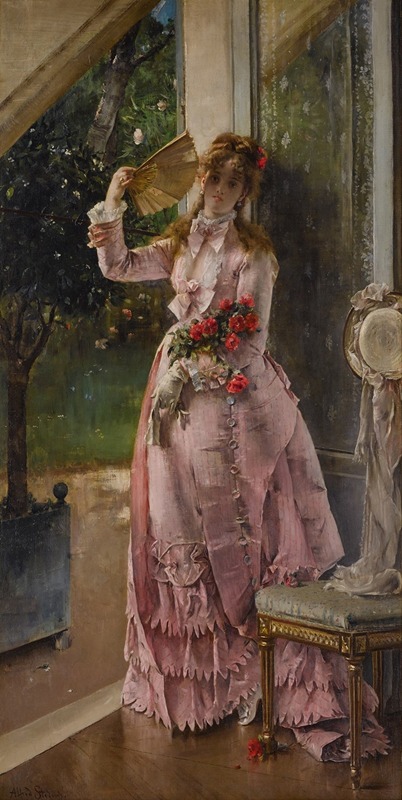
L’éte
A hand-painted replica of Alfred Stevens’s masterpiece L’éte, meticulously crafted by professional artists to capture the true essence of the original. Each piece is created with museum-quality canvas and rare mineral pigments, carefully painted by experienced artists with delicate brushstrokes and rich, layered colors to perfectly recreate the texture of the original artwork. Unlike machine-printed reproductions, this hand-painted version brings the painting to life, infused with the artist’s emotions and skill in every stroke. Whether for personal collection or home decoration, it instantly elevates the artistic atmosphere of any space.
Alfred Stevens, a notable Belgian painter of the 19th century, is renowned for his exquisite portrayal of women and his ability to capture the essence of contemporary life with elegance and precision. One of his works, "L'été" (translated as "Summer"), exemplifies his mastery in depicting the subtleties of light, texture, and the human form.
Alfred Stevens was born in Brussels in 1823 and was part of a family with artistic inclinations. He studied at the Académie Royale des Beaux-Arts in Brussels and later moved to Paris, where he became an integral part of the art scene. Stevens was particularly influenced by the Realist movement and was contemporaneous with artists such as Édouard Manet and James McNeill Whistler. His work often focused on the fashionable women of Parisian society, capturing their grace and the luxurious settings they inhabited.
"L'été" is a testament to Stevens' skill in rendering the delicate interplay of light and shadow, as well as his keen eye for detail. The painting features a woman, likely a representation of the season of summer, dressed in attire that reflects the fashion of the time. Stevens' attention to the textures of fabric and the play of light on different surfaces is evident in the way he paints the woman's clothing and surroundings. The use of color in "L'été" is also noteworthy, with a palette that suggests warmth and vibrancy, characteristic of the summer season.
Stevens' ability to convey mood and atmosphere is a hallmark of his work, and "L'été" is no exception. The painting exudes a sense of tranquility and leisure, inviting the viewer to appreciate the beauty of a moment suspended in time. This quality is enhanced by Stevens' meticulous brushwork and his subtle handling of light, which imbues the scene with a lifelike presence.
Throughout his career, Stevens received numerous accolades and was celebrated for his contributions to the art world. His works were exhibited widely, and he was awarded the Legion of Honor in France. Despite the acclaim he received during his lifetime, Stevens' work fell into relative obscurity after his death in 1906. However, there has been a resurgence of interest in his paintings in recent years, as art historians and collectors have come to appreciate the sophistication and charm of his oeuvre.
"L'été" remains an exemplary piece within Stevens' body of work, showcasing his ability to blend realism with a sense of elegance and refinement. It reflects not only the artist's technical prowess but also his deep understanding of the cultural and social milieu of his time. As with many of Stevens' paintings, "L'été" offers a window into the world of 19th-century Parisian society, capturing the essence of an era with grace and precision.







